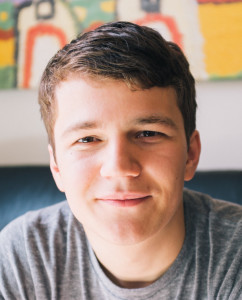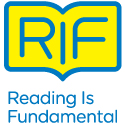Celebrate National Grammar Day!
2015

by Nikolas Baron at Grammarly.com
Five Ways to Make Grammar Fun for Kids
They don’t call it “grammar school” for nothing. Learning grammar—those pesky parts of speech, irregular verbs, even word order and punctuation marks—is an essential part of education.
Even though it’s a vital skill to master, it’s sometimes hard to get kids excited about learning grammar.
Grammarly has been developing good grammar-checking software for academic and professional settings. Through their research, understanding, and experience, here are our five recommendations for making grammar education a little less painful and maybe even—gasp!—fun.
Keep It Real
Bring grammar into the real world by incorporating text from magazines, blogs, popular books, graphic novels, cartoons, and even song lyrics. If examples from textbooks are often dry and out of touch with the interests and problems of modern kids, look instead to see if you can find the subject or the verb of the first line of a favorite song or tweet. How about identifying the adjectives that describe a favorite cartoon character? Use examples from graphic novels to look for differences among, say, the “its” family: it’s or its. Grammar and grammatical applications are all around us!
Play with Words
Grammar doesn’t have to be serious. Encourage your young learners to experiment with puns and other wordplay, writing their own silly stories, and playing with Mad Libs-style fill-in-the-blank games. “All this is play in the sense that it is free of the burden of the reader’s final judgment, but it helps students gain fluency, flexibility, and precision,” says Brock Haussamen, author of Grammar Alive!
Bite-Sized Pieces
Try breaking grammar instruction into mini-lessons that tackle one rule at a time. We’re fond of the “Let’s eat Grandma!” meme that teaches the importance of comma placement in direct address and items in a series. The idea is to master one small grammatical point—for example, misplaced modifiers—preferably using memorable examples like this classic: “This morning I shot an elephant in my pajamas.” Have some fun with that one and then move on to another mini-lesson.
Make It a Game
Gamification is the technique of applying the principles that make games addictive to other activities. You can turn learning into a game by devising your own “level up” and rewards system (perhaps based on the mini-lessons above), or you can check out one of these games. Play on!
Start with the Concrete
Little children naturally progress from concrete to more abstract. When babies learn to talk, their first words are typically words they can see or do: baby, bottle, doggy, Mama, Dada. So follow this natural example from speech: start with things children can see (nouns) and do (verbs). Add from there. What colors are the things children see? How many? What kind? Those three questions produce adjectives! No need to make children cry by beginning with the differences among the two/to/too family yet. Start with the concrete and build from there to include traditional grammar as a part of learning!
What are your tips for teaching grammar to kids? Share your thoughts in the comments!
Bio:
Nikolas discovered his love for the written word in elementary school, where he started spending his afternoons sprawled across the living room floor devouring one Marc Brown children’s novel after the other and writing short stories about daring pirate adventures. After acquiring some experience in various marketing, business development, and hiring roles at Internet startups in a few different countries, he decided to re-unite his professional life with his childhood passions by joining Grammarly’s marketing team in San Francisco. He has the pleasure of being tasked with talking to writers, bloggers, teachers, and others about how they use Grammarly’s online proofreading application to improve their writing. His free time is spent biking, traveling, and reading.
posted by Maan


Follow Us